C-class: Difference between revisions
Pbcjohnston (talk | contribs) Added to notes section |
Pbcjohnston (talk | contribs) |
||
| Line 2: | Line 2: | ||
=== <big>Design, Construction, and Naming Notes</big> === | === <big>Design, Construction, and Naming Notes</big> === | ||
<div style="text-align: justify;"><span style="color:#00008B">The five C-class harbor defense submarines were built to an Electric Boat Company design at the Fore River Shipbuilding Company of Quincy, MA. They were the first two propeller boats built for the U.S. Navy, starting a design trend that would last until 1953. The boats were all commissioned into the Navy with their "fish" names, but on November 17, 1911 the Navy changed its naming convention for submarines and these boats were renamed with the C-class names. Octopus (C-1) was built in 1906/1907 for a set of competitive trials with the Simon Lake submarine Lake (see this page). The Octopus was judged superior in every category and was selected for series production. Four more boats were later built by Fore River. This early trial accounts for the out of sequence hull number for Octopus. | <div style="text-align: justify;"><span style="color:#00008B">The five C-class harbor defense submarines were built to an Electric Boat Company design at the Fore River Shipbuilding Company of Quincy, MA. They were the first two propeller boats built for the U.S. Navy, starting a design trend that would last until 1953. They were also the first Electric Boat submarines designed entirely without the assistance of the company's founder, John P. Holland. The boats were all commissioned into the Navy with their "fish" names, but on November 17, 1911 the Navy changed its naming convention for submarines and these boats were renamed with the C-class names. Octopus (C-1) was built in 1906/1907 for a set of competitive trials with the Simon Lake submarine Lake (see this page). The Octopus was judged superior in every category and was selected for series production. Four more boats were later built by Fore River. This early trial accounts for the out of sequence hull number for Octopus. | ||
In an interesting historical footnote... the USN C-class submarines never fired a shot in anger. However, Electric Boat did sell two of their EB-17 design boats to Austria in 1906. These boats were virtual duplicates of the C-class. Famous torpedo inventor Robert Whitehead and his Whitehead & Co. obtained a license from EB to build the boats in Fiume. The boats were partially assembled in the U.S. (presumably at the Fore River Shipbuilding Company), then shipped in broken down form to Fiume where the Whitehead company finished the assembly and fitting out. They were commissioned into the Austro-Hungarian Navy in 1910 as SM U-5 and U-6. Both boats saw combat in WWI, with U-5 in particular sinking or capturing four ships, including the French cruiser Leon Gambetta. Most of the U-5's successes came while she was under the command of none other than Linienschiffsleutnant Georg Ludwig Ritter von Trapp, the patriarch of the Von Trapp Family Singers of ''The Sound of Music'' fame. Von Trapp's first wife, the mother of many of his children, was Agathe Whitehead, the granddaughter of Robert Whitehead, whose company built the U-5. Agathe also had the honor of christening the U-5 on the day of her launching.</span> | In an interesting historical footnote... the USN C-class submarines never fired a shot in anger. However, Electric Boat did sell two of their EB-17 design boats to Austria in 1906. These boats were virtual duplicates of the C-class. Famous torpedo inventor Robert Whitehead and his Whitehead & Co. obtained a license from EB to build the boats in Fiume. The boats were partially assembled in the U.S. (presumably at the Fore River Shipbuilding Company), then shipped in broken down form to Fiume where the Whitehead company finished the assembly and fitting out. They were commissioned into the Austro-Hungarian Navy in 1910 as SM U-5 and U-6. Both boats saw combat in WWI, with U-5 in particular sinking or capturing four ships, including the French cruiser Leon Gambetta. Most of the U-5's successes came while she was under the command of none other than Linienschiffsleutnant Georg Ludwig Ritter von Trapp, the patriarch of the Von Trapp Family Singers of ''The Sound of Music'' fame. Von Trapp's first wife, the mother of many of his children, was Agathe Whitehead, the granddaughter of Robert Whitehead, whose company built the U-5. Agathe also had the honor of christening the U-5 on the day of her launching.</span> | ||
Revision as of 19:41, 26 November 2023

Design, Construction, and Naming Notes
In an interesting historical footnote... the USN C-class submarines never fired a shot in anger. However, Electric Boat did sell two of their EB-17 design boats to Austria in 1906. These boats were virtual duplicates of the C-class. Famous torpedo inventor Robert Whitehead and his Whitehead & Co. obtained a license from EB to build the boats in Fiume. The boats were partially assembled in the U.S. (presumably at the Fore River Shipbuilding Company), then shipped in broken down form to Fiume where the Whitehead company finished the assembly and fitting out. They were commissioned into the Austro-Hungarian Navy in 1910 as SM U-5 and U-6. Both boats saw combat in WWI, with U-5 in particular sinking or capturing four ships, including the French cruiser Leon Gambetta. Most of the U-5's successes came while she was under the command of none other than Linienschiffsleutnant Georg Ludwig Ritter von Trapp, the patriarch of the Von Trapp Family Singers of The Sound of Music fame. Von Trapp's first wife, the mother of many of his children, was Agathe Whitehead, the granddaughter of Robert Whitehead, whose company built the U-5. Agathe also had the honor of christening the U-5 on the day of her launching.
Octopus/C-1 (Submarine No. 9)
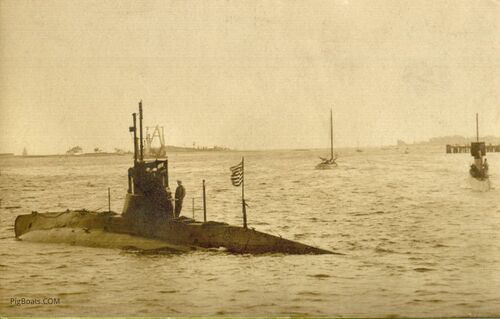
Stingray/C-2 (Submarine No. 13)
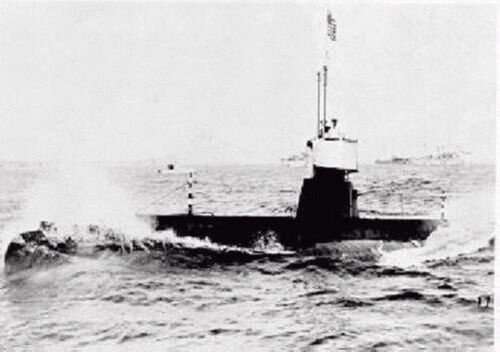
Tarpon/C-3 (Submarine No. 14)
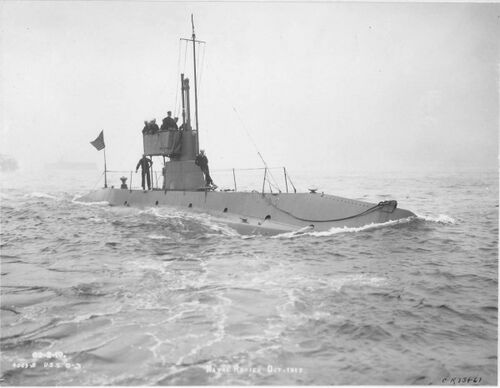
Bonita/C-4 (Submarine No. 15)

The C-class submarines had a reported top speed of 11 knots on the surface and nine knots submerged. They were powered by twin gasoline engines on the surface.
C-4 had a later modification to her bow that made her unique among the C-class. She had a secondary anchor installed in a special housing behind the rectangular door seen here near the tip of the bow. This necessitated the raising of the bow. The remainder of the boats retained the downward angled bow and the mushroom anchor that was deployed from the bottom of the boat and operated from the torpedo room.Snapper/C-5 (Submarine No. 16)
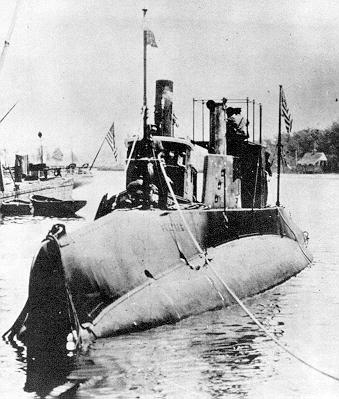
General C-class photos
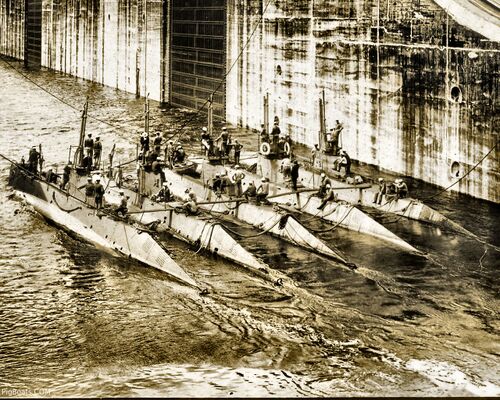
The Submarines are left to right the C-4, C-5, C-2, C-3 and C-1. The Sub Div designators are on their conning towers as a "1" over another number, (this indicating their physical position in a division at-sea steaming formation). The C-1 is 1 over 3; the C-3 is 1 over 5; the C-2 is 1 over 1 (flagship); C-5 is 1 over 4, and the C-4 is 1 over 2.
Seen on the conning tower of the C-5 (second from left) in the white broad brimmed hat is probably the civilian pilot, whose responsibility it was to guide the submarines through the canal. The is still done to this day.
See more General C-class photos.
Page created by:
Ric Hedman & David Johnston
1999 - 2023 - PigBoats.COM©
Mountlake Terrace, WA, Norfolk, VA
webmaster at pigboats dot com